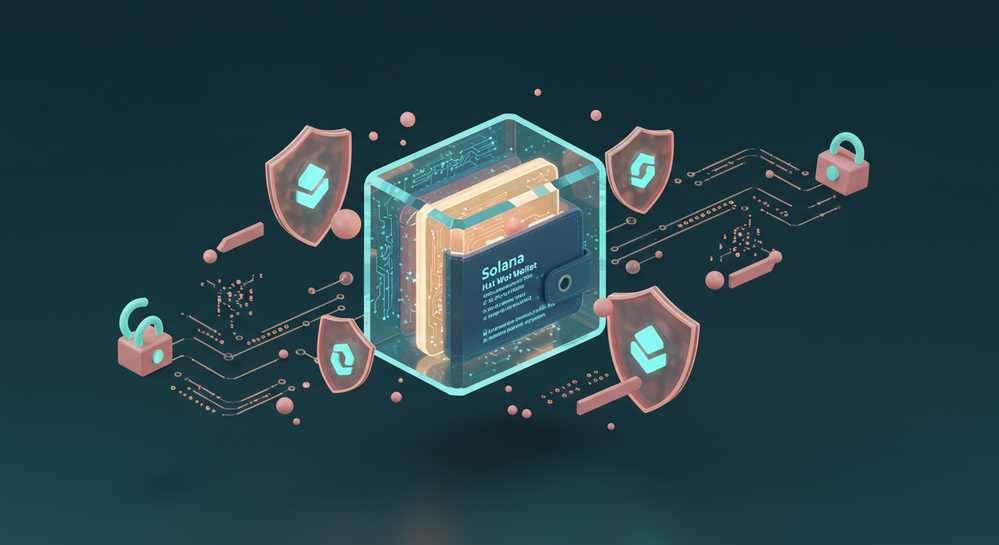In the rapidly evolving world of decentralized finance, understanding the tools that safeguard your digital assets is paramount. Among these, hot wallets play a crucial role, acting as your primary interface with blockchain networks. Specifically, for those navigating the high-speed and efficient Solana ecosystem, grasping what is Solana hot wallet code is essential. This guide will demystify the underlying principles and technical architecture that power these digital custodians, ensuring you interact with confidence and clarity.
Table of Contents
Understanding Hot Wallets in the Blockchain Ecosystem

A hot wallet refers to any cryptocurrency wallet that is connected to the internet. This continuous online presence allows for quick and easy transactions, making them highly convenient for everyday use in the fast-paced crypto world. Unlike cold wallets, which are offline and offer maximum security against online threats, hot wallets prioritize accessibility and usability. They are integral to interacting with decentralized applications (DApps), exchanging tokens, and participating in staking or liquidity provision. While their online nature presents certain security trade-offs, they remain indispensable for active participants in blockchain ecosystems like Solana. Understanding their fundamental operation is the first step towards secure digital asset management.
Solana Hot Wallet Code: Practical Implications
Beyond core cryptography, what is Solana hot wallet code in its functional essence? It is the intricate software logic powering user-friendly interfaces like Phantom or Solflare. This code optimizes interactions with Solana’s high-performance blockchain, ensuring rapid transaction finality and minimal fees. It seamlessly connects users to decentralized applications, from DeFi to NFT marketplaces, enhancing the overall ecosystem experience. The code’s open-source nature often invites community audits, bolstering security and fostering trust. This transparency is vital for safeguarding digital assets in Solana’s dynamic environment.
The Core of Solana Hot Wallet Code

At its heart, the “code” behind a Solana hot wallet primarily refers to the cryptographic processes and software logic that manage your digital keys and facilitate transactions on the Solana blockchain. When you create a Solana hot wallet, a unique seed phrase (a series of words) is generated. This seed phrase deterministically derives your private key, which is a secret alphanumeric code. From this private key, your public key (wallet address) is then generated. This underlying code ensures that only the rightful owner, possessing the private key, can authorize movement of funds or interactions on the Solana network.
Key Functions of Solana Hot Wallet Code
Understanding what is Solana hot wallet code involves recognizing its critical functions. The software logic handles several vital operations seamlessly for the user. These functions are fundamental to secure and efficient interaction with the Solana network.
- Key Generation and Derivation: This algorithmic process transforms your seed phrase into a hierarchical set of private and public keys. It adheres to established cryptographic standards like BIP32, BIP39, and BIP44, ensuring robust key management.
- Transaction Signing: When you initiate a transaction, the hot wallet’s code uses your private key to cryptographically sign it. This digital signature verifies ownership of the funds and guarantees the transaction’s integrity, preventing any tampering.
- Interaction with Solana RPC: The wallet software interfaces with Solana’s Remote Procedure Call (RPC) nodes. This allows it to query account balances, submit signed transactions, and interact with smart contracts on the Solana Virtual Machine (SVM), facilitating engagement with undefined.
Security Aspects and Best Practices for Solana Hot Wallets

While the convenience of Solana hot wallets is undeniable, their online nature introduces specific security considerations. The underlying code is designed to protect your assets, but user vigilance is equally critical. Understanding what is Solana hot wallet code’s security features empowers effective risk management.
Core Security Functions
- Private Key Protection: The code ensures your private key remains unexposed, used internally for cryptographic signing. Compromise of this key puts assets at severe risk.
- Encryption: Many hot wallets encrypt stored private keys or seed phrases on your device. This adds a crucial defense layer against unauthorized access.
- Transaction Validation: The wallet’s code meticulously verifies transaction integrity. It ensures parameters are correct before signing, preventing errors or malicious attempts.
Mitigating Risks in Solana Hot Wallets
To significantly enhance your Solana hot wallet security, adopting proactive measures is essential. These best practices complement the wallet’s code protections. Staying informed about undefined is also crucial.
- Use strong, unique passwords and enable multi-factor authentication (MFA).
- Exercise caution against phishing; always verify URLs.
- Regularly update your operating system and wallet software.
- Never share your seed phrase or private key with anyone.
Interacting with Solana Hot Wallet Code: Development and User Perspective
The interaction with Solana hot wallet code varies significantly between end-users and developers. For users, what is Solana hot wallet code means navigating intuitive graphical interfaces, simplifying complex blockchain operations.
User Engagement with Solana Wallets
- Token Transfers: Wallet UIs simplify sending/receiving SOL or SPL tokens.
- DApp Connectivity: Wallets enable staking SOL and connecting to DApps for smart contract interactions.
- Transaction History: Users view history, fetched via Solana’s RPC endpoints.
Developer Interaction with Solana Wallet APIs
Developers engage with what is Solana hot wallet code using SDKs and APIs. These tools offer programmatic control for building applications.
- Wallet Connectors: Integrate DApps with Solana wallets for authentication and transaction signing.
- Programmatic Transactions: Construct and send complex transactions, interacting with on-chain programs.
- Key Management: Implement secure key storage, often delegating private key operations to wallet providers.
This dual perspective highlights the versatility of Solana’s hot wallet code.
Navigating the Solana ecosystem effectively hinges on a solid understanding of its core components, especially how hot wallets operate at a code level. By grasping the intricacies of key generation, transaction signing, and the inherent security considerations, users can engage with confidence and safeguard their digital assets against potential threats. The efficiency and speed of Solana, coupled with robust wallet practices, pave the way for a seamless blockchain experience. For further insights and tools to enhance your Solana trading journey, explore Sol Trading Bot.
